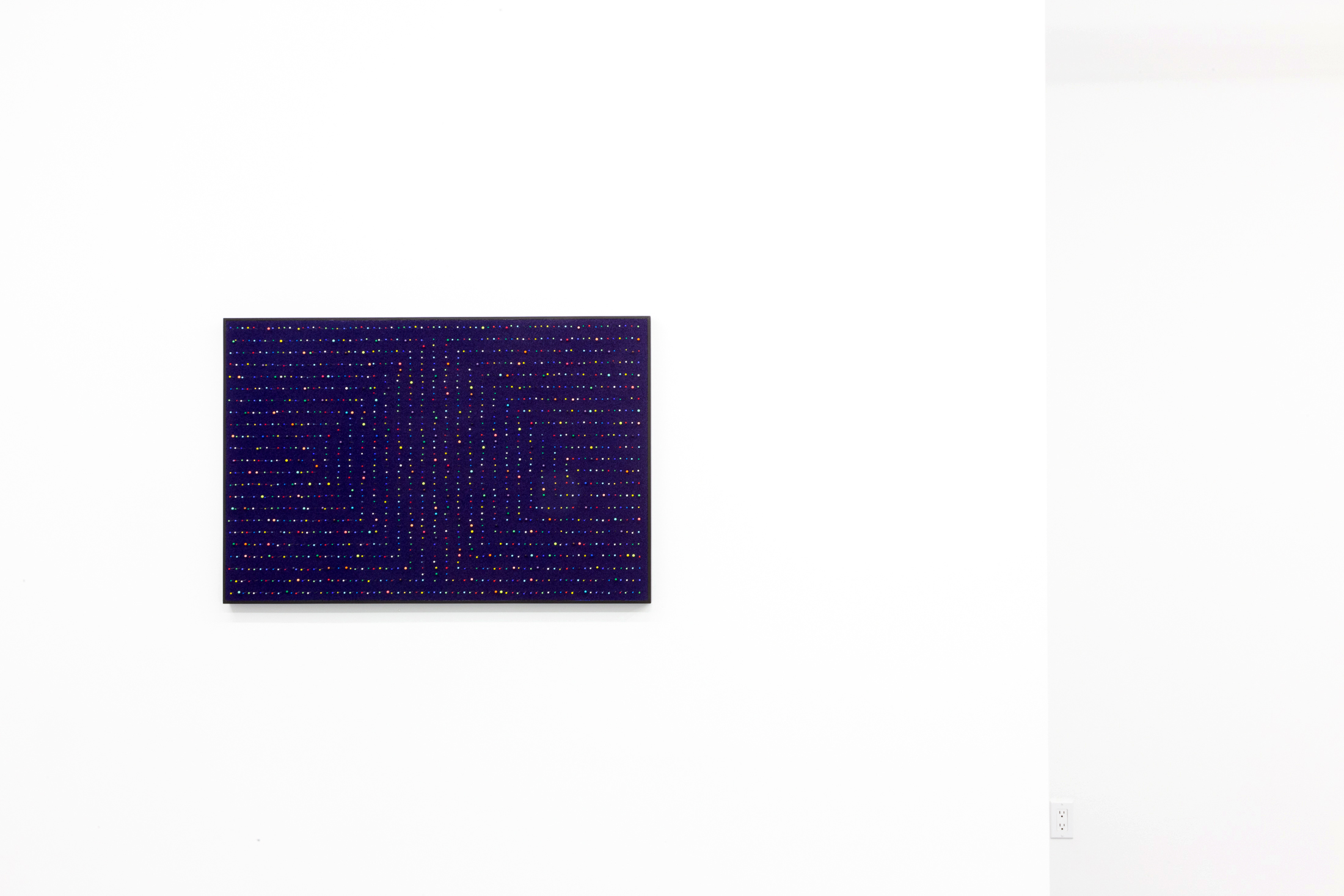Transmitter presents:
Nestled in the Warm Embrace of “Painting”
TANA QUINCY ARCEGA • LIZ ATLAS • MIYOUNG SOHN • MELISSA DADOURIAN • JUSTIN MATA • CHRISTIAN MAYCHACK • JAMES SANSING
JUNE 21 – JULY 21, 2019
OPENING RECEPTION FRIDAY, JUNE 21, 6–9 PM
Nestled in the Warm Embrace of “Painting” features seven artists who expand the parameters of painting as a medium without utilizing conventional painting materials. Primarily consisting of object-based artworks, the exhibition explores themes including identity, art history, personal narrative, and space, through mark-making and the use of unconventional materials.
The curator asked the artists, “What is it in the parameters or history of painting that attracts artists who may not even use paint to frame or form their work as paintings?" Their responses vary greatly:
In both my three-dimensional work and in that of others working in a similar vein, there is a referential nod to painting, particularly of the early to mid 20th century. Pattern and color, as seen in the later paintings of Braque and Matisse, and then in that of the American painters who were so directly influenced by their European counterparts, has very much impacted my work, and led to my use of fabric to embrace this focus on pattern and color.
On another level the roaring debate that enlivened both practice and criticism in the New York art scene of the 1960’s—questions/explorations of painting as object—was an early influence on my sculpture that still remains relevant in my work today. The work of Frank Stella, Richard Tuttle et al., which challenged the limitations of painting as illusion and broke out into the physical world of objects—the viewers space—reverberates in my work, as I bring together the physical reality of materials with the illusion of painting in one moment in time and space.
–Liz Atlas
My sculptural works are visual explorations of the everyday. Coming to the U.S. as a child and not knowing the English language, visual language became a major tool in my understanding of American culture. Having prioritized visual language, I saw things in a way they weren’t always intended. These childhood perceptions are instilled in my work today. I use common materials to translate my observations and transform their material function to create a new interpretation of my daily experience.
The work included, Untitled, is also referred as Frank Stella, Pac-Man and a spinster. Frank Stella’s early minimalist paintings influenced this piece to extend further discussion. I make sculptural drawings/paintings consisting of straight pins on cork board. I use pinhead as mark-maker. I place, arrange and accumulate pins on customized cork board. The various size, color and length of assorted pins create dimensional perceptual play. From a distance, the pin lengths disappear into the dark cork board while the pinheads float in space. As viewers move and get closer, they change and reveal different viewing experience.
–MiYoung Sohn
I feel like there is a psychological interiority to painting that is quite unlike other mediums. You are invited to enter the space of the painting, to project your thoughts into it. The Abstract Expressionists worked that angle well, and left us with a great wealth of visual language to work with. I myself want to work with my hands in a much different way than a painter but still want to use the vocabulary of abstract painting, so I often describe myself as having my head in painting and my hands in sculpture. The work exists somewhere between.
–Christian Maychack
I was trained as a classical, figurative oil painter. During grad school, I came down with an illness that left me unable to hold a brush with my arms so I held it between my teeth. Thus, quite simply, began my research into alternative mark-making and eventually materials. The context for this research was rooted in the painting tradition even when I stopped using brushes and paint. I had to ask myself, "what was the pleasure of painting distilled, broken down, abstracted?"
Also true to my classical background, I seek verisimilitude. My marks reference the substrate on which they are built. They become a kind of virtual abstraction of their surroundings. Finally, my unconventional painting materials engage a kind of rigorous study, just as an oil painter would seek to understand each pigment or medium's qualities and how to apply them for longevity and optical presence, so do I.
–Tana Quincy Arcega
Cement is not a material associated with painting, yet I consider my work to be painting. Although my approach to painting is unconventional, some of my methods date back to the renaissance. I mix my own paint from powder using casein or eggs, and some work includes gold or silver leaf. I am also interested in conventional issues of painting, form, line, and texture are divorced from the paint and addressed through the construction of the substrate. Color and surface are resolved through paint. Where once the properties of painting were singularly expressed through paint, I separate these pursuits into independent actions. I am interested in the viewer interacting with the work as an object on the wall, keeping the work contained in the frame. I am less concerned with the area outside the frame. I believe the newest evolution of painting is through the use of alternative and banal materials.
–James Sansing
The limitations that painting has had historically and inherently in its 2 dimensionality and use of one material—paint—to create the illusion of depth and form, is a powerful way to create a vulnerable and revealing space. Every mark made and every color choice is blatantly there on the canvas for all to see. This fragile space of relationships between color and form is what attracts me most about painting.
–Melissa Dadourian










